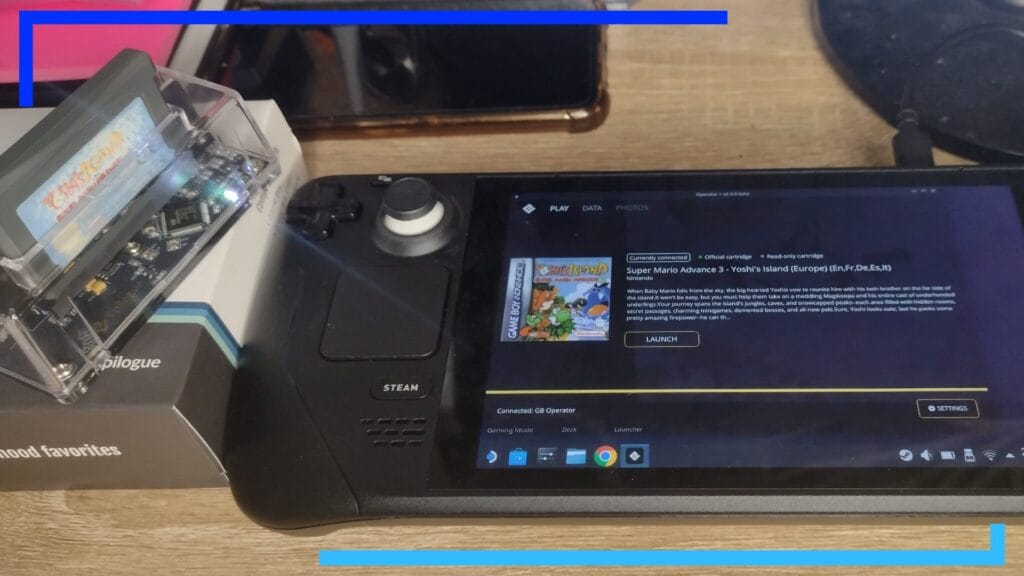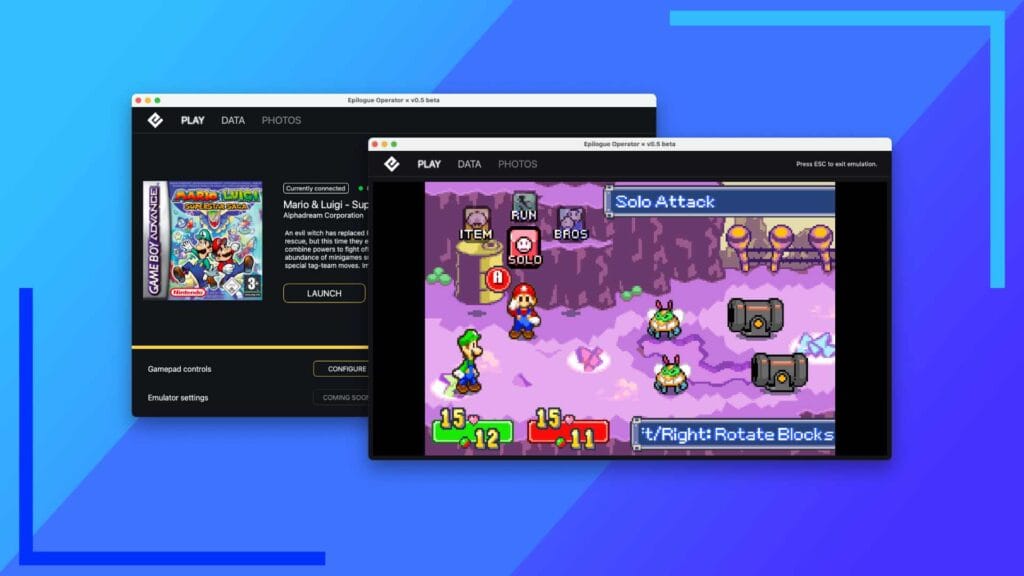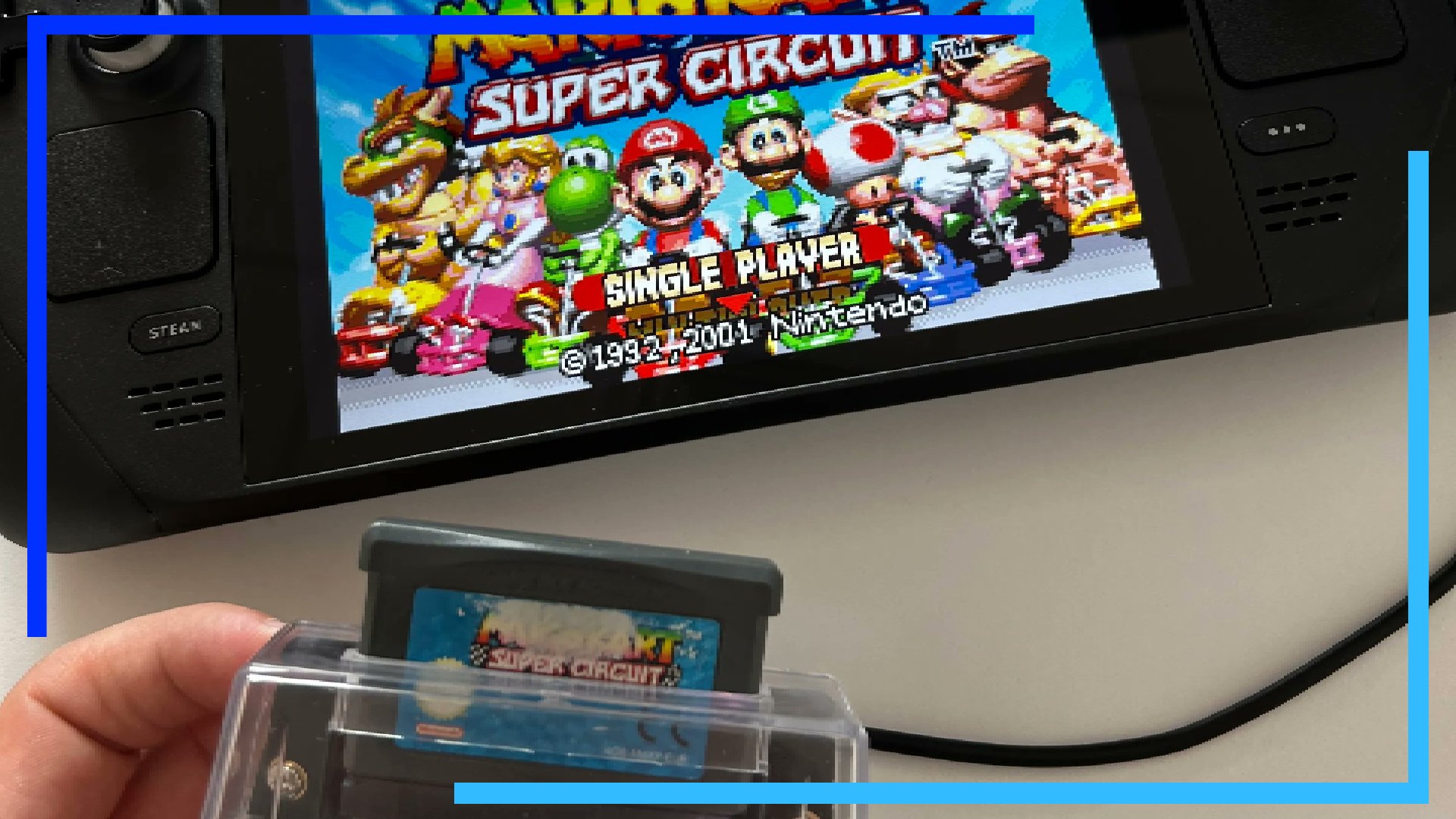Don’t you just love when something seems like pure magic? You don’t understand it, you haven’t a clue what’s happening, but you know you’re witnessing something that was probably made in Salem by a bunch of goths.
That’s the feeling the GB Operator conjures. Plop it down, plug in a Game Boy cart, and – somehow – the game appears as playable on the Steam Deck.
I’m sure if I thought about it I could figure out what was happening but the truth is I don’t want to. Let me live in my childlike wonder just this once. The GB Operator is too special to ruin with logic and techsplanations.
It Just Works

I said this with the Logitech G Cloud and I’ll say it again here: Isn’t it just great when things work? Sure, it took me a few attempts to get the GB Operator software installed – mostly because it was designed for PC but the clever clogs at Epilogue have a way to make it run in a Linux environment.
Of course, because it’s Linux that means there are several extra steps to get up and running (stupid Linux), but once it’s all installed and it has the right permission to cast its spells, everything just works.
There’s a severe case of nostalgia when it comes to messing with carts and resistance is futile. Pushing a GBA cart into the slot is as satisfying as it’s ever been. Lining it up, giving it a gentle push, and then that smooth locking groove as the pins connect. It sounds stupid laying it out like that but when you’re old and tired, it’s the little things in life that make you smile.
That’s probably enough reminiscing for one review. Let’s talk about how it works.
You plug in the cart – in my case it was Super Mario Advance 3 (the Yoshi one) – hook up the GB Operator via a USB-C to USB-A on PC or USB-C to USB-C on Steam Deck, open the software program, and then the game appears on the screen. It’s as sudden as a microwave’s ping. Games appear on the screen as though they were always there. Again, it’s just pure undiluted magic to see.
GB Operator Explained

Part of the problem right now with emulation is the inability to back up older, cartridge-based games and play them via an emulator. Sure, with CD and DVD-based games this isn’t an issue – just grab a disc drive and dump the game to a hard drive. Easy stuff.
It’s also surprisingly easy to dump modern cartridges. A modded 3DS, for example, is able to dump purchased games onto an SD card. Whack that SD card in a PC and you’ll be able to back up your collection or transfer it over to an emulator to play it with increased resolution, faster load times, or fan-made HD textures. In short, If you’ve been able to get EmuDeck running on the Steam Deck, dumping games is child’s play by comparison.
But trying to back up or play a Game Boy game on modern hardware isn’t anywhere near as easy. That was, of course, until we found out about the GB Operator from Epilogue.
Think of the GB Operator as the cartridge port of a Game Boy, only this pocket-sized device can be hooked up to computers and, yes, the Steam Deck, meaning owners of original Game Boy games can play their games on modern hardware.
Plug a Game Boy cart into the GB Operator, open up the emulator program that’s available on Windows, Mac, and Linux, and let you either play it or dump it for use in another emulator.
Not only that, the GB Operator is capable of rooting out counterfeit cartridges. If you’ve ever taken to eBay to buy a copy of Pokemon Fire Red, chances are you’ve come across a few of these.
Having a surefire way to know if a cart in your collection is legit or not is actually a pretty neat feature.
GB Operator Availability

The GB Operator is available now for $49.99 through the Epilogue website.
Compatibility – Computer and Steam Deck
On computers, it’s as simple as downloading the software from the Epilogue site and installing it. With the GB Operator on Steam Deck, it’s a similar process to how we got Xbox Game Pass running on the Deck.
The GB Operator uses the Linux software version on Steam Deck, so be sure to download that version if you’re doing it yourself.
Epilogue also told us they used a USB-A to USB-C cable to connect the GB Operator to the Steam Deck, partly due to that being the cable that comes with the GB Operator. We also confirmed you can use a double-ended USB-C cable if you want to, though.
Conclusion
It’s safe to say I’m smitten with the GB Operator. It’s such a cute device. Even when it’s not in use you’ll want it out on display. It’s that kind of cool.
When it comes to doing what it’s designed for, it’s unparalleled. You could get an Analogue Pocket for four times the price, but if you’re after something cost-effect to let you play your carts in real-time or dump them for use in other emulators, the GB Operator is really easy to recommend.
It’s fast, accurate, and the sheer delight of using actual hardware is something emulators can’t compete with.
If you want something that’s going to leave you smiling, do yourself a favor and grab the GB Operator. It’s enchanting in all the right ways.
Header image courtesy of Epilogue. | All hands-on images captured by RetroResolve. | Epilogue provided a review unit free of charge. We then tested it for four days on a Steam Deck running the latest beta version.

